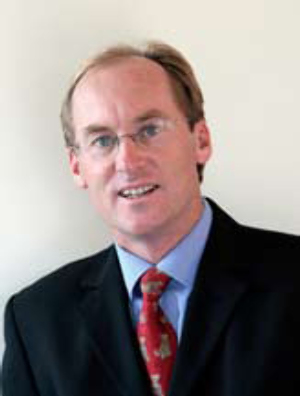
NZPIF executive officer Andrew King
Political apologies are flowing thick and fast after last week’s release of the Prime Minister’s Chief Science Advisor, Sir Peter Gluckman’s, report into the health risks of meth contaminated properties.
The report found that exposure to meth residue on surfaces in properties is not a health risk and suggested the revision of the current testing regime and the introduction of much higher testing levels.
Gluckman even told media that he couldn’t see the point in testing properties suspected of contamination due to meth use at all - although meth manufacture is a different story.
The report came as a relief to many landlords as millions of dollars have already been, apparently needlessly, spent on testing and decontaminating properties to the very conservative levels in the existing standard.
But uncertainty has also come in response to the report, especially as the existing standard and levels remain in place and will do so for the foreseeable future.
Rental property owner Vicki Beagley says the suggested higher threshold (15 micrograms per 100cm2 as opposed to 1.5 micrograms per 100cm2) for meth contamination leaves her unsure of what to do.
She feels uneasy with the above 15 mg level and unsure of what it would mean in terms of the remediation of a contaminated property, if anything under 15 mg is considered safe.
“Given tenants are so knowledgeable now and ask for everything, I am not sure where I should stand if, say, a property tested at 10 mg and the potential tenants asked me what remediation I intended.
“I still think there should be a remediation level. For example, sugar soap - water 3X for x level to x level, sand and repaint, x level to x level, remove walls, and so on.”
Beagley adds that if she was buying a rental property in the near future, she would get it tested for meth.
She is not alone in her uncertainty and many landlords say they plan to tread carefully on the meth front.
But NZ Property Investors Federation executive officer Andrew King hopes that people don’t think the report is a conspiracy of some sort and that the new levels it suggests are risky and unsafe.
“Because the levels suggested are safe,” he says. “The old levels were too low and created lots of fear and concern about potential health risks.
“It may take some people a while to let go of those fears, especially given a fair bit of ongoing scaremongering.”
While there has been wide coverage of the report, King says what has not got out enough is just how high the safety margins involved are.
“People really do seem to think they could end up suffering from terrible health effects if meth has ever been used in a property. But that is not the case. The levels suggested are nowhere near unsafe.”
King says the Government should run a public education programme to educate people about what the report means and to show the suggested new levels are safe.
“On top of that, a lot of work remains to be done to clarify the situation until a new standard is developed and put in place.”
That could include establishing a framework around using do-it-yourself meth tests to gauge potential levels within a property before opting to get more exhaustive, professional testing, he says.
But the policy response of the insurance industry, which could save millions of dollars if meth contamination levels are lifted as suggested, is critical too.
Insurance Council chief executive Tim Grafton says insurance policy wordings currently in the market generally refer to remediation to the levels that are in force under the NZS 8510: 2017 standard.
“Insurers will make their own calls going forward, but current policies will need to be honoured relative to that current standard.”
Grafton says that if the standard is revised and the levels are raised, the wording in policies will have to change too.
“It is conceivable that an insurer might think the Government should be moving more quickly to increase the levels to be consistent with those suggested by the Gluckman report.
“In turn, they might see fit to write a new policy for events and offer that to the market and that could have a higher level than the current standard.
“If an insurer was to do that then we might start seeing competitive policies that have higher levels. It would mean risk and pricing changes so it is all about market response.”
However, he has no knowledge of any insurer preparing to do that and he also can’t see any immediate change in the area generally.
“That’s why we are calling for the Government to move quickly to review the situation following Sir Peter's report.”
Standards New Zealand manager Carmen Mak has said they are open to updating standards and are happy to engage with people seeking changes to the NZS 8510: 2017 standard.
But reviewing the standard requires the formation of a committee of stakeholders and public consultation on the draft standard before it is approved by the independent Standards Approval Board.
Read more:


